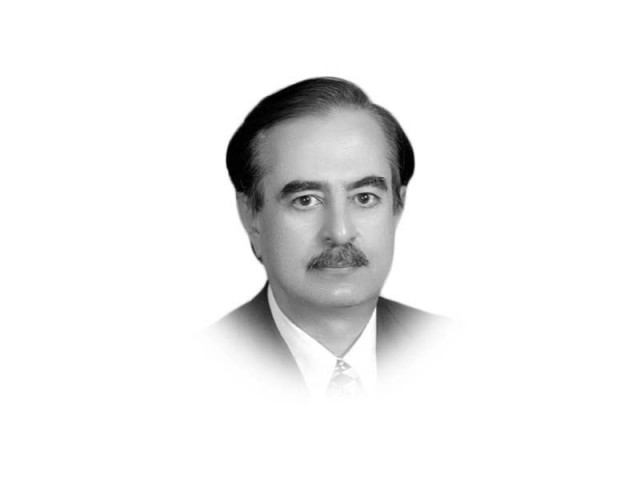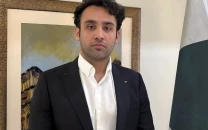Soaring greenback
It is questionable whether a dollar-strapped country should be forced by the IMF into a complete free trade regime

The greenback is soaring to new heights — touching Rs330 in open market and Rs305 in interbank trading — despite the nine-month, $3 billion SBA signed with IMF towards the end of June 2023.
The State Bank and MOF authorities, in a recent meeting of the Senate Finance Committee, explained that although imports decreased to roughly $6 billion during the period 1st July up to 22 August, 2023, as compared to $8 billion during the same period last year, the overall current account balance, after remaining positive during the last four months, showed a deficit of $800 million for July 2023, mainly due to opening up of all lids on imports as agreed with IMF.
Prior to restoration of the IMF deal, which was derailed in February 2022 by the previous government violating agreed terms, granting unbudgeted petrol and electricity subsidies costing over $1.2 billion (Rs210-220 billion which was nearly 24% of the total 2022 budget of Rs8.4 trillion), imports were squeezed unprecedentedly hard to avert pressure on depleting dollar reserves, which fell to less than $4 billion by end FY2022. This was essential, given the inflexibility of export earnings and remittances to avert an otherwise imminent debt default which would have had unparallelled economic, social, political and security consequences.
Seemingly harsh import constriction and avoidance of default was unavoidable and can be rightly described as a feather in the previous government’s cap. A difficult choice had to be made between growth and default. Avoidance by a nuclear state of 240 million of a meltdown, even if it is a short-term relief and doesn’t resolve deep-seated economic distortions, merits recognition.
The abortive attempt by the outgoing government, with Punjab and KP support, at undermining attempts at revival of the stalled IMF package, was a hapless choice at placing the economic, political and social fortunes of 240 million people at a discount against partisan motives. It is only an indication of the extent to which, unfortunately, extreme political polarisation has come to stay.
One of the principle conditions of the IMF SBA, effected in June 2023, was freeing of all restrictions on imports, irrespective of whether they related to necessities or inessential commodities and services.
With the lifting of these restrictions, pent-up import demand fructifying, which were constricted from around $6 billion to $3 billion per month during the period from May 2022 to April 2023 is the main cause for the soaring of the dollar.
It is questionable whether a dollar-strapped country that is in the throes of a debt trap and has barely escaped default should be forced by the IMF into a complete free trade regime leading to excessive dollar appreciation, sharply impacting inflation with possibilities of social unrest.
The Ukraine war, following upon Covid shocks, led to widespread worldwide economic distortions reflecting in inflationary pressures, tighter interest rates, contractionary deflation and pressures on international trade and employment. Slower growth in the US, China and EU, with inflationary stresses, has sparked interest rate hikes, buoying up the dollar against other currencies which has also not left Pak rupee unaffected.
Oil and commodity price hikes following upon the Ukraine war and Covid, along with the rupee devaluation, have resulted in sharp inflationary pressures with CPI touching 30%. The impact upon the common man’s standards of life is devastating with possibilities of civil unrest. Immediate amelioration is essential to obviate social unrest.
The volatile political uncertainty, particularly persisting since April 2022, is undoubtedly the other main cause for dollar flight. Due to incessant political uncertainty, Ukraine war, huge floods, breach of IMF package terms in February 2022 leading to tough IMF conditionalities, growth plummeted from 6% to 0.5%, inflation soared to more than 30%, reserves depleted and exports shrank. Incessant political uncertainty following the non-acceptance of a VONC in April 2022 and continued protests calling for snap elections has had an acute impact.
An uncertain economic and political environment leads to investment depletion and recourse to investment in securer foreign exchange which is the other main reason for the sharp rupee decline.
To ensure a market-based dollar rate, the IMF has also stipulated that the difference between the market and interbank rate of the dollar shall not, at any given time, exceed 1. 25%. This puts pressure on the interbank rate since intervention to regulate the market rate is ruled out under the terms of the IMF agreement. It is noteworthy that a completely unregulated foreign exchange market continues to be a rarity throughout world economies, those particularly vulnerable to world trade and capital flows. But the prospects of continuation of the SBA, followed later by a possible long-term EFF, post-April 2023, hopefully the last resort to IMF, necessarily dictates strict compliance with IMF capital market requirements.
With the pent-up import demand tapering off during the next 3- 4 months, the pressure on the rupee and the flight of the dollar should gradually settle down, although continued heightened political uncertainty, which doesn’t seem to be abating any time soon, given the vast chasm between the different variables, will certainly continue to exacerbate conditions.
Clarity regarding forthcoming general elections should also help in decreasing political uncertainty.
With gradual return of political surety, economic stabilisation and increase in growth and tax revenues, it is conceivable to contemplate negotiation of concessions from the IMF in trade regulations, like permitting selective import curbs, capital account (interest rate and foreign exchange) adjustments and pro-poor subsidies tied to improved revenue situation through widened tax base. The capacity to wield influence with international financial institutions will essentially depend upon setting up one’s own house on a firmer footing, economically and politically.
With stability and domestic-led growth we may graduate to a level where it is possible to move out from the debilitating neo-liberal dictates of the Washington Consensus towards greater domestic control over trade, foreign exchange, fiscal management for reduction of inequality and welfare support for the poor. A greater state role and responsibility for welfarism, social investments, export-led growth, while protecting the poor from the afflictions of inegalitarianism and inflation will only become possible once all domestic stakeholders agree to reach a broad consensus on a home-grown economic revival charter.
Published in The Express Tribune, September 2nd, 2023.
Like Opinion & Editorial on Facebook, follow @ETOpEd on Twitter to receive all updates on all our daily pieces.















COMMENTS
Comments are moderated and generally will be posted if they are on-topic and not abusive.
For more information, please see our Comments FAQ